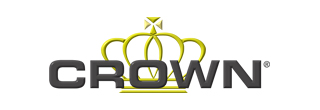In this course we explore how porous paving can help design professionals manage stormwater, increase accessibility, and provide a cost-effective low maintenance solution for design professionals. Our team discusses how porous paving can contribute to multiple LEED v4 credits and reduce environmental impacts. Finally, we review several case studies that illustrate the benefits of porous paving systems for various types of building projects.
FREE |
|
Customizable, integrable clean rooms designed for drug compounding environments. Join us for this one-hour course on adaptable clean rooms engineered for in pharmacy settings. Facilitating USP Compounding Compendium to guide the design, development and construction of clean rooms, these spaces are biotech, pharmaceutical companies, sterile and non-sterile environments and hospitals among many others.
FREE |
|
We explore the critical aspects of moisture management in building design, focusing on the implementation of effective rainscreen wall systems and composite cladding. Participants will learn to identify potential moisture-related issues that can impact aesthetics, structural integrity, and occupant health. The course explores color and design options for composite cladding, examines the four key components of rainscreen systems, and discusses best practices for sustainability and end-user wellness.
FREE |
|
In the heart of Los Angeles, where the skyline meets the unpredictable forces of nature, a battle is brewing against earthquakes, wildfires, mudslides, and more. As the city grapples with the looming threats of drought, smog, and power grid failures, design professionals are stepping up to create resilient buildings that can withstand the chaos. In this course, we discuss LEED v4.1 BD+C strategies to protect occupants and promote urban safety.
$45.00 |
|
As severe weather events and rising sea levels threaten to reshape our coastlines and devastate communities, our team discusses cutting-edge strategies to create resilient, sustainable structures that can withstand nature's fury. We explore LEED v4.1's robust framework for climate-adaptive design, exploring innovative techniques for flood mitigation and storm-resistant construction. Our team utilizes Florida as a pivotal case study to illustrate the devastating impacts of extreme weather events and to explore innovative solutions for future resilience.
$45.00 |
|
Is Phoenix on the brink of a desert apocalypse, where relentless heat, dwindling water supplies, and raging wildfires could transform this vibrant city into an uninhabitable wasteland? Explore the critical intersection of climate change, urban design, and sustainability in this course focused on the future of desert metropolises. Using Phoenix, Arizona as a compelling case study, we'll examine the complex challenges facing arid urban environments and innovative solutions to address them.
$45.00 |
|
This one-hour course delves into the advanced properties and benefits of Silane Modified Polymer (SMP) for architects and building professionals. Participants will explore SMP’s unique adaptability and bonding strength, which supports high-performance applications across varied climates and building types. The course examines SMP’s contribution to enhanced acoustical control, an essential feature for creating more comfortable and quiet indoor environments.
FREE |
|
Handrails and guardrails are a safety feature that we easily take for granted as common fixture of the environment where stairs and balconies are a feature, aiding us in our coming and going. In this presentation, we discuss how handrails and guardrails can meet safety, sustainability, aesthetic, and ADA requirements and help protect building occupants. In addition, we describe how handrails and guardrails can contribute to LEED projects.
FREE |
|
Forest Stewardship Council® (FSC®) certification has been a leading driver of global forest conservation since 1994, and the green building movement is a cornerstone of its success. The US Green Building Council’s LEED rating system and the designers, specifiers and builders who apply LEED standards play a critical role, as doing so rewards and promotes forest conservation. Other FSC market drivers, such as Living Building Challenge, and high volume purchasing by major retailers all work together to expand the marketplace and make finding FSC building products easier.
FREE |
|
Welcome to the forefront of innovation in powder coating technologies. In this course, we delve into the transformative world of powder coating systems, exploring their profound impact on sustainability, performance, and cost-effectiveness. Throughout this course, you will learn about the benefits inherent in powder coating systems. From their unparalleled performance enhancements to their remarkable reduction in environmental footprint, you will uncover the myriad ways in which powder coatings are reshaping industries for the better.
FREE |
|
A comprehensive exploration of fully automated, hydraulically and electrically driven doors and windows, with a special focus on the cutting-edge technology of vertically folding bifold doors. Participants will appraise the engineering marvels behind hydraulic and electric drive mechanisms and how these systems have transformed the aesthetics and functionality in door design.
FREE |
|
How does cementitious fireproofing contribute to both fire safety and sustainability in modern building design, and what role does it play in achieving LEED v4.1 BD+C certification? This course explores the fundamental principles of cementitious fireproofing, its environmental impact, and its role in sustainable building design. Participants will gain a thorough understanding of how cementitious fireproofing protects buildings and occupants during fires, while also examining its contribution to reducing embodied carbon in LEED v4.1 BD+C projects.
FREE |
|
This course offers architects, designers, engineers, and specification writers a comprehensive foundation of knowledge essential for navigating the dynamic landscape of cold-formed steel framing. Participants will gain practical insights into how this industry aligns with the latest standards in code compliance, structural integrity, fire safety, sound insulation, and sustainable construction practices.
FREE |
|
In this course, we review the intent and applications for prerequisites and credits for the LEED v4.1 BD+C EQ category. We discover strategies to designing healthier spaces by improving indoor environmental quality for occupants. We discuss how indoor environmental quality can improve human health and well-being, worker productivity, and occupant comfort.
$45.00 |
|
Building occupants who can visually connect with outdoor environments while performing everyday tasks experience greater satisfaction, attentiveness, and productivity. In healthcare facilities, providing patients with views and access to nature can shorten hospital stays and reduce stress, depression, and the use of pain medication. Designing for quality views involves consideration of building orientation and site design, facade, and interior layout.
$45.00 |
|
Protecting wildlife and preserving it for future generations is critical. Our planet desperately needs to be safeguarded, with climate change already wreaking havoc on our natural environment. In this course, we describe how to achieve the LEED v4.1 BD+C Protect or Restore Habitat credit and reduce environmental impacts for building sites. We explore how design professionals can preserve high-quality native ecosystems, including their soils, native vegetation, sensitive species habitat, wildlife corridors, and hydrology.
$45.00 |
|
A century ago, everyone could look up and see a spectacular starry night sky. Now, millions of people across the planet will never experience the majestic night sky where they live. The widespread use of artificial light at night is not only impairing our view of the universe, it negatively affects our environment, our safety, our energy consumption, and our health. Light pollution creates an abundance of environmental problems. Wildlife species that hunt or forage at night may be unable to feed.
$45.00 |
|
Have you ever wondered about the untapped potential of esoteric design strategies in shaping the future of sustainable architecture? What design strategies are innovators, disruptors, and mavericks using to advance sustainable design? In this course we explore uncommon LEED v4.1 BD+C pilot credits and review how projects may register for pilot credits and pilot ACPs. Finally, we examine strategies that diverge from the status quo and help design professionals think out of the box to explore new ideas about sustainable design.
$45.00 |
|
In this course, we explore how Health Product Declarations (HPDs) contribute to the LEED v4.1 rating system. Our team discusses how design professionals can achieve the LEED v4.1 BD+C and ID+C Material Ingredients credit. In addition, we review the HPD Open Standard and discuss how it can influence design professionals to make healthier material selections for buildings.
$45.00 |
|
A LEED site assessment evaluates environmental features that the design of a sustainable site and building should take into consideration. A well-developed assessment conducted before or during the conceptual design phase may reduce project costs and risks, promote occupants’ health, and honor a site’s unique characteristics. In this course we describe how project teams can achieve the LEED v4.1 BD+C Site Assessment credit and review resources that can help design professionals meet their goals.
$45.00 |



































